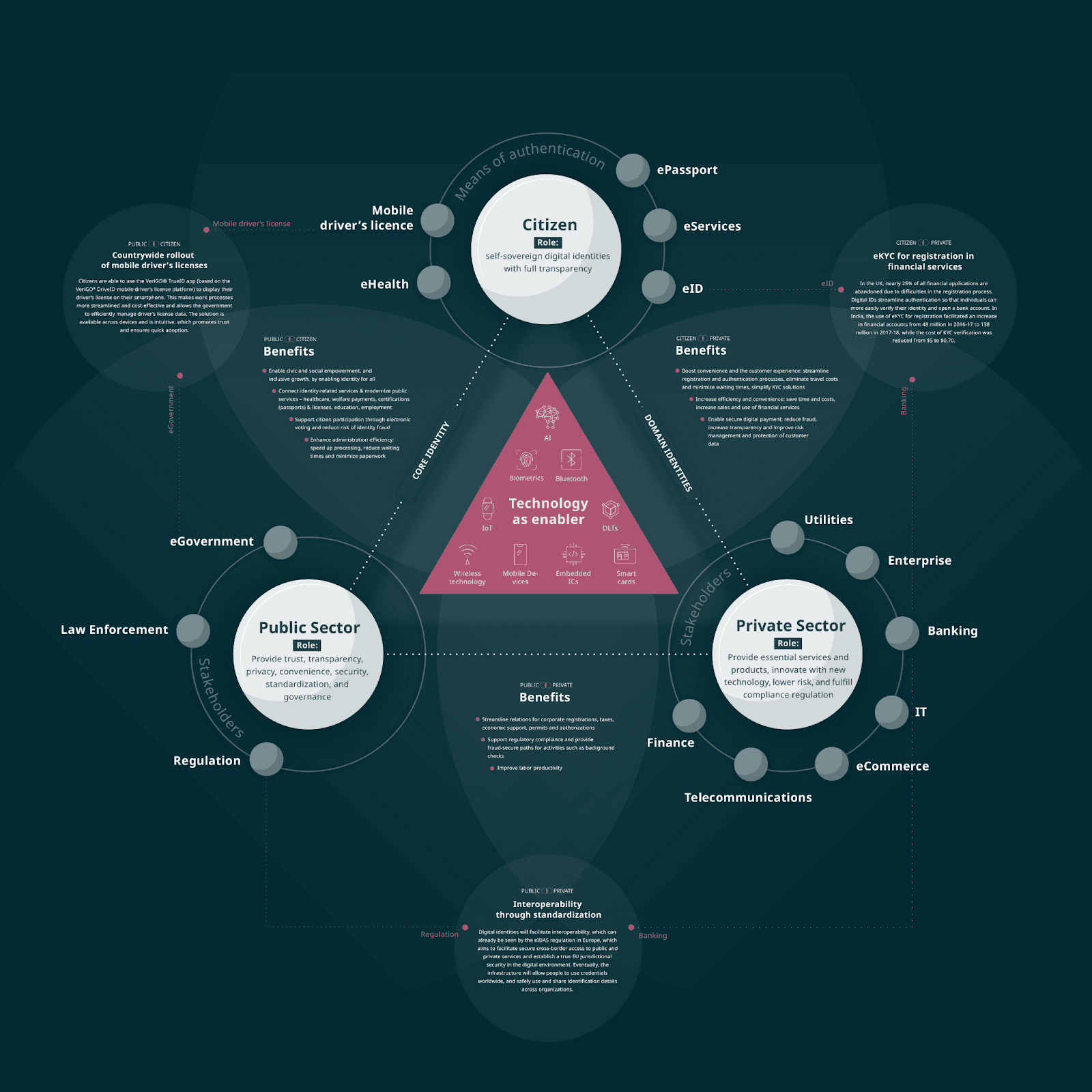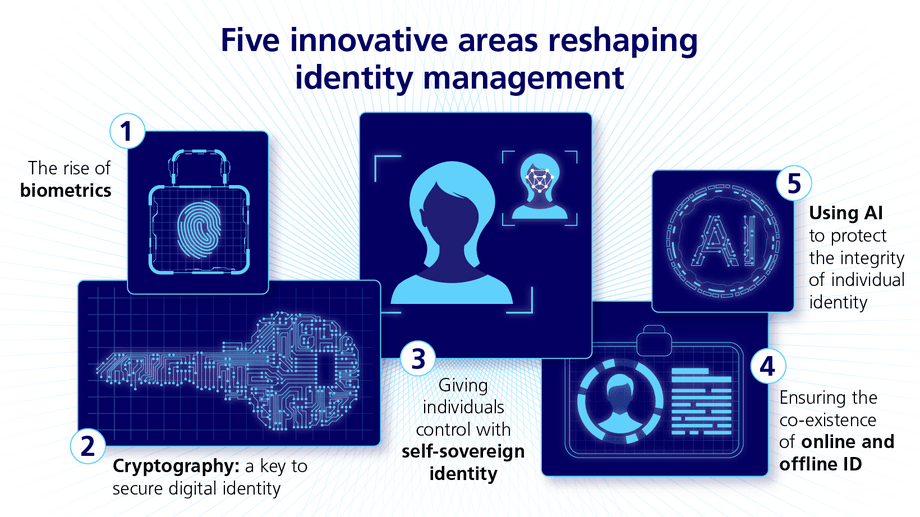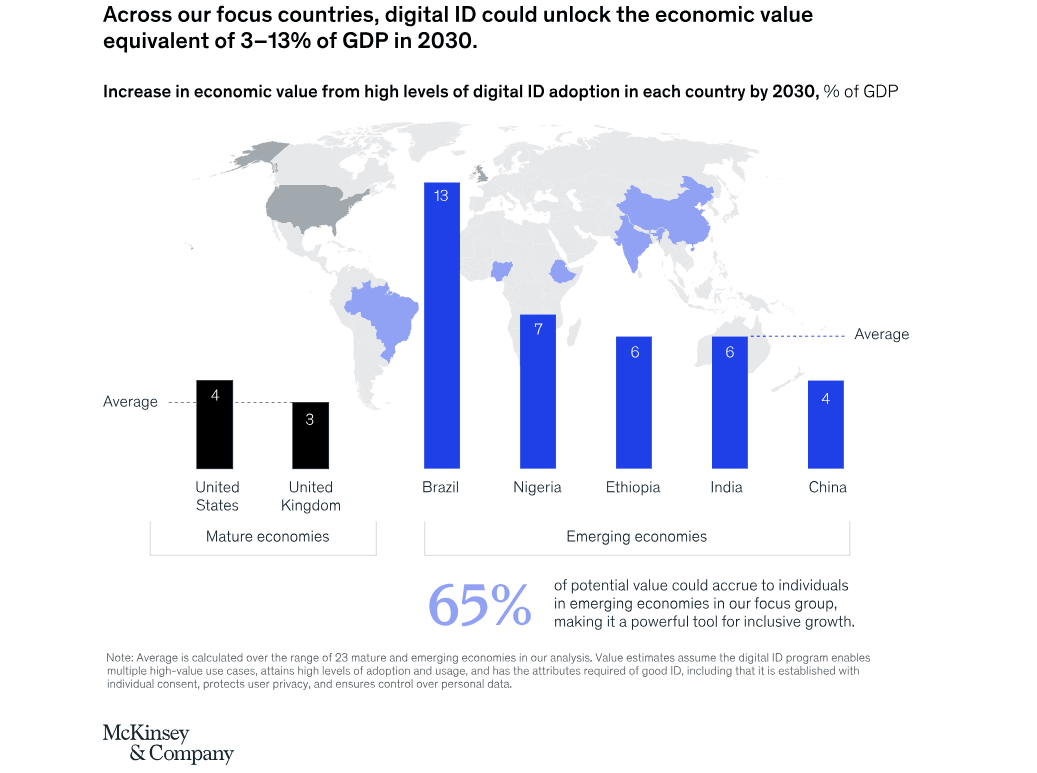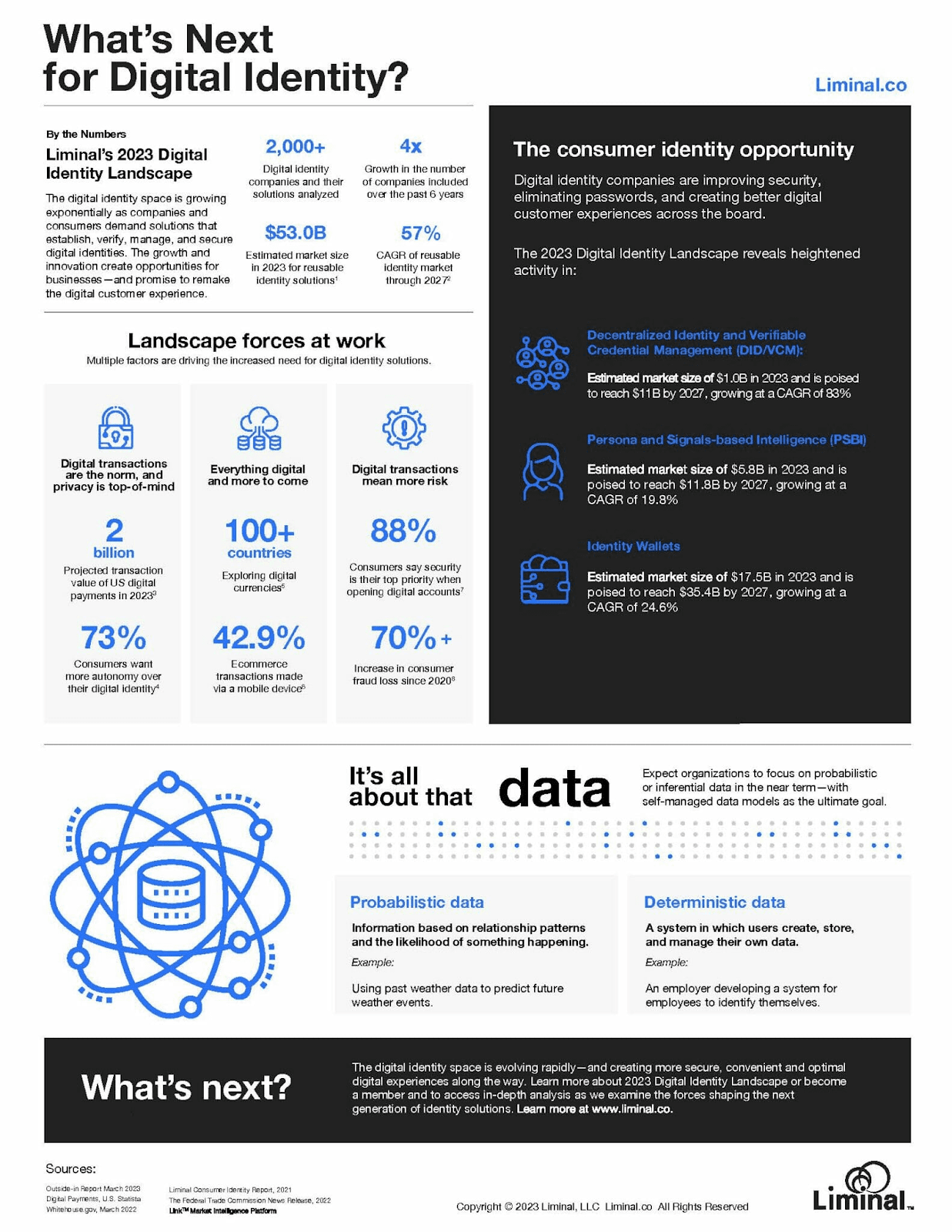business resources
Why Digital Identity Will Be Your Biggest Asset in the Coming Years
25 Nov 2025, 10:35 am GMT
Why Digital Identity Will Be Your Biggest Asset in the Coming Years
Every two minutes, the world creates more data than all of humanity produced before 2003. And every trace, your logins, credentials, biometrics, financial activity, is now part of a fast-growing asset worth billions. As governments and enterprises shift to AI-verified ecosystems, your digital identity is becoming the new passport, currency, and gateway to economic opportunity.
Identity has always been a central part of human civilisation. The way we prove who we are has shaped access to rights, property, opportunity, and participation in society. For centuries, physical documents, passports, birth certificates, licences, have served this purpose.
But the world is changing with a velocity that demands our immediate attention.
Digital transformation, artificial intelligence, global mobility, remote work, personal data ecosystems, and security concerns have pushed the concept of identity far beyond paper.
A 2024 McKinsey study found that countries with advanced digital ID systems could unlock between 3% and 13% of GDP value by 2030, depending on their maturity and adoption. Meanwhile, a World Bank report notes that 850 million people worldwide still lack any recognised form of identity, limiting access to services, finance, and mobility. Digital identity is positioned to close this gap.
What was once a convenience is becoming a necessity. Over the next decade, digital identity will evolve from a technical accommodation into one of the most valuable personal and organisational assets you possess.
It will influence how individuals participate in the global economy, how they work, travel, study, access services, and protect their rights. For businesses and governments, it will become a strategic infrastructure that enables trust, security, and innovation.
The transition is not merely technological. It is economic, social, cultural, legal, and political. The implications stretch across every major institution and every corner of human activity.
The meaning of digital identity today
Digital identity can be described as the set of data, attributes, verifications, and representations that define an individual or entity in digital space. It is not a single file or document stored in one location. Rather, it is a layered ecosystem that encompasses multiple dimensions of who you are and what you have accomplished.
Increasingly, digital identity is becoming decentralised, persistent, and portable across services and borders. It no longer functions as a simple login credential tied to a single platform. Instead, it serves as the foundation for interaction in digital environments, accessible across multiple touchpoints while maintaining integrity and coherence.
A comprehensive digital identity includes:
- Personally identifiable information (name, date of birth, address)
- Behavioural data generated by online interactions (browsing history, purchase patterns, engagement metrics)
- Device information (hardware identifiers, location data, usage logs)
- Financial and transactional histories (credit records, payment patterns, investment accounts)
- Biometric identifiers (fingerprints, facial recognition data, voice patterns)
- Social and professional profiles (LinkedIn, Twitter, GitHub, personal websites)
- Credentials, licences, and certifications (degrees, professional qualifications, specialised training)
- Cryptographic keys and digital signatures (unique mathematical proofs of identity ownership)

Key characteristics of modern digital identity
As the world continues its rapid digitalisation, your digital identity increasingly functions as the primary gateway through which you access opportunity, services, and economic participation.
- Verified: Identity data is authenticated by trusted issuers such as governments, employers, banks, and educational institutions. Verification transforms raw data into credible evidence.
- Portable: Digital identity moves across platforms and jurisdictions whilst maintaining its integrity and recognisability. You carry it with you rather than being tied to a single service provider.
- Dynamic: It evolves constantly as a person accumulates credentials, experiences, and accomplishments. Your digital identity today is not your digital identity tomorrow.
- Secure: Modern identity systems rely on encryption, biometrics, and cryptographic proofs for protection. Security is not optional; it is foundational.
- Interoperable: Digital identity is designed to work across sectors and jurisdictions, enabling seamless interactions across traditional boundaries.

Why digital identity is becoming central to modern life
A combination of global forces is pushing digital identity from the background infrastructure into the foreground of society. Understanding these forces is essential to appreciating why digital identity will become your greatest asset.
A digitally-driven economy
Almost every meaningful interaction, communication, commerce, education, banking, employment, healthcare, now takes place online or has a significant digital component. The global economy is fundamentally shifting from physical presence to digital participation, requiring identity systems that function reliably in virtual environments.
- Digital identity now governs access to:
- Signing employment contracts and managing work relationships
- Onboarding to financial platforms and payment systems
- Accessing government services from tax filing to welfare benefits
- Participating in the gig and remote work economy
- Verifying age, residency, professional qualifications, and background information
- Making payments, receiving wages, and managing financial assets
- Accessing education, training, and credential verification
Remote work and global mobility
The workplace has undergone a structural transformation. Decentralisation is no longer a temporary arrangement but an established feature of modern work. A person in London might work for an employer headquartered in Singapore, using collaboration tools built in California, whilst serving clients across multiple continents.
This distributed reality depends entirely on digital identity. In this environment, digital identity enables:
- Cross-border hiring without physical interviews
- Rapid, trustworthy verification of credentials and qualifications
- Remote compliance with local employment and tax regulations
- Reputation systems for freelancers and contractors operating globally
- Trust between parties who may never meet in person and operate across different legal jurisdictions
Artificial intelligence and verification needs
Artificial intelligence is reshaping how information is created, analysed, and deployed. AI systems consume vast quantities of information, generate synthetic content at scale, and make decisions that affect millions. As synthetic media, AI-generated profiles, deepfakes, and impersonation become increasingly sophisticated, the ability to verify human authenticity becomes vital.
In this context, digital identity allows:
- Definitive proof of personhood in digital systems
- Protection against impersonation and fraudulent representation
- Trusted access to digital agents and AI platforms
- Secure interaction with automated systems
- Accountability tracing when things go wrong
The rise of online fraud and security risks
Cybercrime is growing at an alarming rate. Identity theft, phishing attacks, fake accounts, synthetic identities, and fraudulent transactions have moved from exceptional events to routine occurrences. The financial, emotional, and social costs of identity fraud are staggering, affecting millions annually.
As a result, governments and companies are systematically demanding stronger verification mechanisms. Digital identity helps defend against fraud by:
- Enabling rapid identity verification with high confidence
- Reducing the effectiveness of common impersonation tactics
- Strengthening authentication across multiple channels
- Improving financial security through verified transaction chains
- Protecting individuals from data breaches through encryption and compartmentalisation
Personalisation and control of data
Consumers increasingly demand personalised experiences without sacrificing control over their information. They want convenience paired with transparency and agency. Traditional models, where platforms own and monetise user data, are facing growing resistance and regulatory scrutiny.
Digital identity frameworks, particularly decentralised models, respond to this demand by enabling:
- Consent-driven data sharing where users approve specific uses
- Selective disclosure where only necessary information is revealed
- Direct ownership of personal data by individuals
- Auditability of who accesses information and when
- The ability to revoke or withdraw consent

Digital identity as economic value
Assets traditionally include tangible items, and, property, precious metals, and financial instruments like stocks, bonds, and commodities. But the digital economy operates according to different rules. In this emerging world, identity itself has become a fundamental asset.
Identity enables participation in economic activity
Without a secure digital identity, individuals face severe restrictions. They struggle to access job markets, formal financial systems, online platforms, and essential public services. In practical terms, digital identity functions as the passport of the global digital economy. Without it, entire avenues of opportunity remain closed.
Identity unlocks opportunity
A strong, verified digital identity serves as a bridge to numerous opportunities. It allows individuals to:
- Demonstrate skills and qualifications in verifiable form
- Establish credibility with potential employers, clients, and partners
- Open new income streams through remote work and digital platforms
- Access marketplaces and platforms previously restricted by geography
- Build professional visibility that attracts opportunities
- Secure remote opportunities without physical relocation
- Streamline cross-border compliance and regulatory requirements
Identity generates data that holds monetary value
The data produced through digital identity interactions has measurable, real-world value. Businesses rely on verified identity data for risk assessment and customer understanding. Platforms use it to improve services and personalisation. Governments use it for policy planning and resource allocation. Individuals can leverage it for targeted offerings and opportunities.
When managed correctly and ethically, digital identity becomes not just an access mechanism but a productive digital asset that generates ongoing value.
Identity enhances digital trust
Trust is the currency of the digital world. Transactions, relationships, and economic activity all depend on it. Verified identity removes friction and uncertainty from digital interactions.
When both parties can verify each other's identity reliably, transaction costs fall, risk premiums disappear, and business flows more smoothly. This is not abstract; it translates directly into better terms for consumers, lower prices, and expanded access to services previously restricted by geographical or institutional barriers.
Governments, corporates, and institutions are building identity infrastructure
The value of digital identity is not theoretical or distant. Right now, nations and organisations worldwide are investing heavily in identity frameworks. This investment signals confidence in digital identity's trajectory and necessity.
Government-led initiatives
Governments are systematically building digital identity infrastructure. They are launching:
- Digital ID cards that combine security with accessibility
- National e-ID schemes that provide government-backed verification
- e-Residency programmes that extend digital citizenship beyond borders
- Biometric passports that integrate physical and digital identity
- Digital tax systems that rely on verified identity
- Online voting pilots that depend on secure identity verification
Corporate digital identity systems
Technology companies are simultaneously developing their own identity systems:
- Social login frameworks that create portable identity across platforms
- Customer identity platforms that streamline business operations
- Enterprise verification systems that reduce onboarding friction
- Payment authentication systems that link identity to financial transactions
- Professional identity networks that create verifiable career records
Industry standards and global alignment
Behind the scenes, standardisation bodies are creating frameworks for interoperability and trustworthiness:
- Decentralised Identifiers (DIDs) that provide user-controlled identity anchors
- Verifiable Credentials (VCs) that create portable, cryptographically-sound proofs
- eIDAS frameworks in Europe that enable cross-border digital services
- ISO standards for digital identity that establish global baselines
- Open standards that prevent lock-in and monopolistic control\

The move toward self-sovereign and decentralised identity
A major philosophical and technical shift is underway in how digital identity is structured and controlled. The movement is away from centralised, platform-controlled identities toward user-owned, decentralised identity systems.
What is decentralised identity?
Decentralised identity represents a fundamental reimagining of the relationship between individuals and identity infrastructure. Rather than storing identity data on centralised servers controlled by institutions, decentralised models put control in the hands of individuals. This approach allows people to:
- Store identity credentials locally on personal devices or in secure digital wallets
- Present cryptographic proofs without exposing underlying personal data
- Avoid dependence on centralised databases that become attractive targets for hackers
- Control precisely who accesses their data and under what conditions
- Move their identity between service providers without losing their history
Digital identity wallets
The practical expression of decentralised identity is the digital wallet. These secure digital containers will soon store:
- Government-issued IDs and passports
- Educational certificates and degrees
- Professional driving licences and permits
- Health records and medical credentials
- Memberships and professional licences
- Employment histories and job references
- Financial credentials and banking information
- Achievements and verified accomplishments
Risks, challenges, and ethical considerations
Digital identity brings genuine opportunities, but it also introduces risks that demand serious attention. Progress requires acknowledging challenges and building safeguards.
Privacy concerns
Centralised identity systems that aggregate data across domains create vulnerability. If a single database is breached, comprehensive personal information is exposed. Decentralised models address this, but adoption remains uneven and inconsistent. The challenge is ensuring privacy protection keeps pace with technological capability.
Cybersecurity threats
Identity systems become attractive targets for sophisticated attacks precisely because they are so valuable. Nation-states, organised crime, and advanced persistent threat actors will target identity infrastructure. Defending against these threats requires continuous investment and vigilance.
Surveillance risks
If not governed carefully, identity systems enable comprehensive tracking and profiling. Governments or corporations with access to complete identity data can monitor movements, associations, transactions, and behaviours. The infrastructure of control becomes invisible but pervasive.
Bias and exclusion
AI-driven verification tools must be designed to avoid discrimination or exclusion. If algorithms reflect historical biases, they will exclude the very populations identity systems should include. Ensuring fairness requires deliberate, ongoing effort.
Interoperability issues
Fragmented systems may create barriers instead of removing them. If identity credentials are incompatible across jurisdictions or sectors, they lose their power to unlock opportunity.

The next decade: Digital identity as a foundational human right
The digital economy will soon treat identity not merely as a technological feature but as a fundamental right. Access to work, finance, mobility, education, and services will depend on it. Those without recognised digital identity will face exclusion approaching what previous generations experienced without literacy.
Digital identity will become:
- A personal asset that individuals own and control
- A professional asset that determines career opportunities
- A financial asset that affects creditworthiness and opportunity
- A social asset that enables community participation
- A civic asset through which citizens exercise rights
Final thoughts
Digital identity is transitioning from a technical concept to a core asset of modern life. With the rise of artificial intelligence, global mobility, digital finance, and pervasive online interaction, identity becomes the anchor of trust.
Individuals who cultivate secure, verified digital identities will access more opportunities. Organisations that build robust identity systems will lead in trust, innovation, and security. Governments that embrace inclusive and interoperable identity systems will create more efficient and resilient societies.
In the years ahead, your digital identity will determine how you work, travel, learn, transact, and participate in society. It will define your access to opportunity. It will become one of your most important assets.
Preparing for this future is no longer optional. It is essential.
Share this
Himani Verma
Content Contributor
Himani Verma is a seasoned content writer and SEO expert, with experience in digital media. She has held various senior writing positions at enterprises like CloudTDMS (Synthetic Data Factory), Barrownz Group, and ATZA. Himani has also been Editorial Writer at Hindustan Time, a leading Indian English language news platform. She excels in content creation, proofreading, and editing, ensuring that every piece is polished and impactful. Her expertise in crafting SEO-friendly content for multiple verticals of businesses, including technology, healthcare, finance, sports, innovation, and more.
previous
Skincare Products Every Traveller Should Pack
next
What are 5 Essential Ways to Establish an Entry Point?